This step by step diy woodworking project is about panel cart plans. The project features instructions for building a wooden cart for storing plywood sheets or other kind of panels. The cart has caster wheels so you can move it easily in your workshop. Make sure you take a look over the rest of the related projects to see alternatives and more projects for your workshop, as well as for your backyard.
When buying the lumber, you should select the planks with great care, making sure they are straight and without any visible flaws (cracks, knots, twists, decay). Investing in cedar or other weather resistant lumber is a good idea, as it will pay off on the long run. Use a spirit level to plumb and align the components, before inserting the galvanized screws, otherwise the project won’t have a symmetrical look. If you have all the materials and tools required for the project, you could get the job done in about a day. See all my Premium Plans HERE.
Projects made from these plans
Panel Cart Plans

Building a panel cart
Cut & Shopping Lists
- A – 2 pieces of 2×4 lumber – 93″ long, 2 pieces – 15″ long, 2 pieces – 18″ long FRAME
- B – 1 piece of 3/4″ plywood – 18″x96″ long FLOOR
- C – 2 pieces of 3/4″ plywood – 8″x49 1/2″ long SIDES
- D – 1 piece of 1×6 lumber – 96″ long, 2 pieces of 3/4″ plywood – 4 1/4″x18 3/4″ long TRIMS
- E – 4 pieces of 2×4 lumber – 96″ long SUPPORTS
- 7 pieces of 2×4 lumber – 8 ft
- 1 piece of 3/4″ plywood – 4’x8′
- 1 piece of 1×6 lumber – 8 ft
- 1 1/4″ screws
- 1 5/8″ screws
- 2 1/2″ screws
- filler, stain
- glue
Tools
![]() Hammer, Tape measure, Framing square, Level
Hammer, Tape measure, Framing square, Level
![]() Miter saw, Drill machinery, Screwdriver, Sander
Miter saw, Drill machinery, Screwdriver, Sander
Time
![]() One day
One day
How to build a panel cart
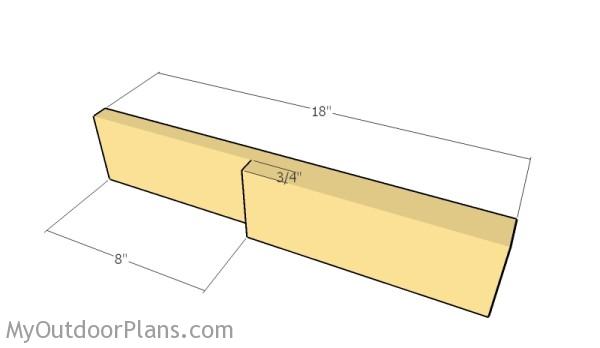
Building the side joists
First of all you need to build the two sides for the bottom frame. Make parallel cuts to the marked area using a circular saw and use a chisel to remove the excess. Clean the surface with sandpaper.
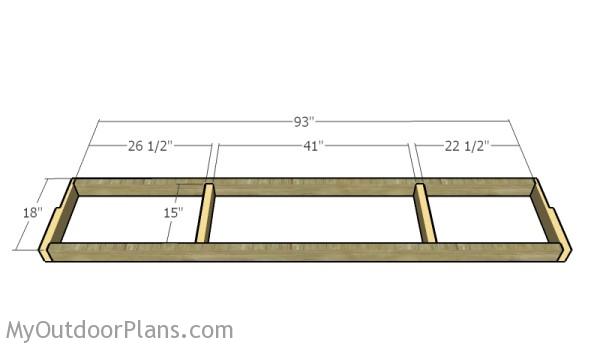
Building the frame for the panel cart
Next, you need to assemble the frame for the cart. Cut the rest of the components from 2×4 lumber. Drill pilot holes through the sides and inset 2 1/2″ screws into the 93″ long joists. Then drill pilot holes through the 93″ long joists and insert 2 1/2″ screws into the 15″ long joists. Make sure the corners are square. Align the edges with attention for a professional result.
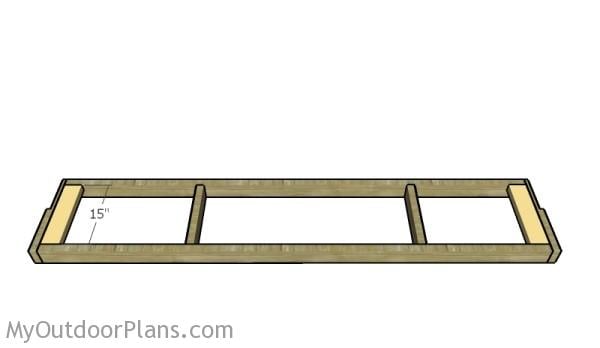
Fitting the caster wheels supports
Next, you should drill pilot holes through the front and back joists and insert 2 1/2″ screws into the supports for the caster wheels.
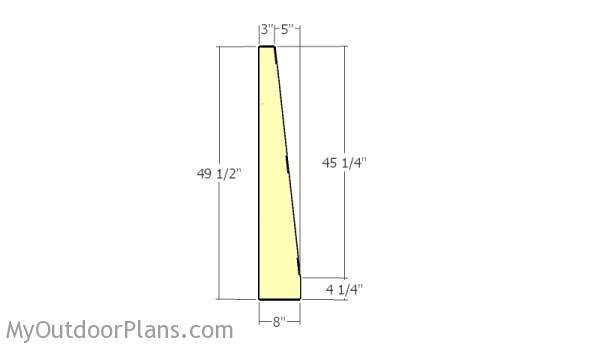
Build the vertical supports
Continue the project by cutting the sides for the cart. Use 3/4″ plywood or 1×10 lumber for these components. Mark the cut lines on the slats or plywood and get the job done with a circular saw.

Building the sides for the cart
Make the notches to the vertical supports, as shown in the diagram. Make sure you take accurate measurements, otherwise the horizontal components won’t fit into place.
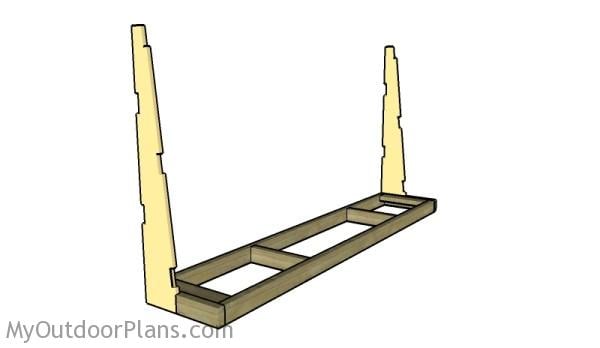
Fitting the vertical supports
Attach the vertical supports to the frame, as shown in the diagram. Drill pilot holes through the vertical supports and insert 1 1/4″ screws into the joists. Add glue to the joints for a better bond.
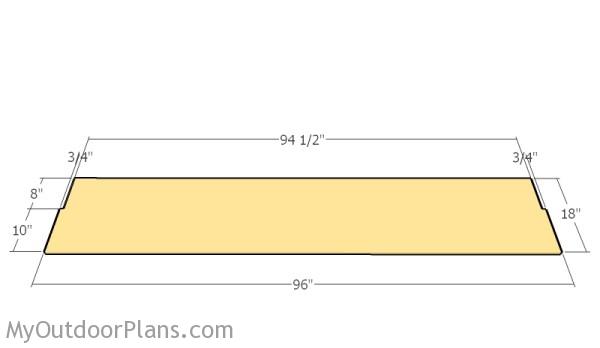
Building the floor for the cart
Build the floor for the cart from 3/4″ plywood. Use a circular saw to make cuts to the sides of the plywood panels. Smooth the edges with sandpaper for a professional result.
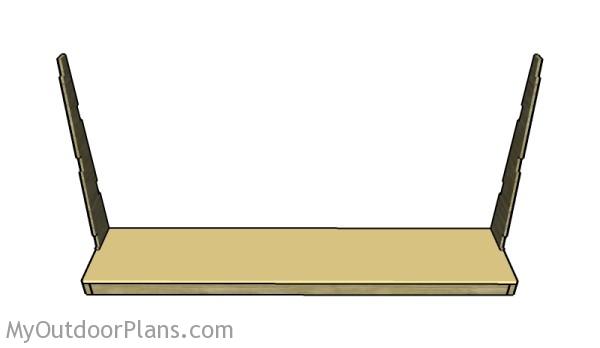
Attaching the floor
Fit the plywood panel to the floor and secure it to the joists using 1 1/4″ screws. Align the edges with attention, before inserting the screws.
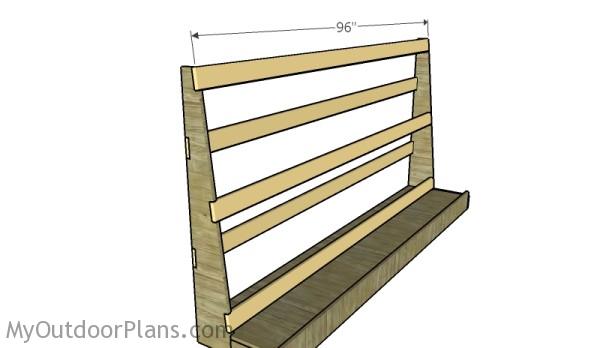
Fitting the horizontal supports
Next, fit the horizontal supports to the side components. Use 8′ long 2×4 lumber slats for the job. Drill pilot holes at both ends and secure them to the vertical components and insert 1 1/4″ screws. Add glue to the joints.
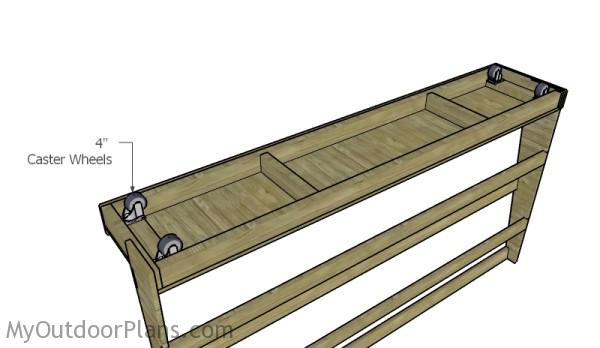
Attaching the caster wheels
One of the last steps is to attach the 4″ caster wheels to the bottom of the cart. Use 1 1/4″ screws to lock the caster wheels to the supports.

Fitting the trims to the bottom
Next, attach the trims to the bottom frame of the scrap lumber cart. Fit a piece of 1×6 lumber to the front face of the cart. In addition, cut trims for the sides of the cart out of 3/4″ plywood (4 1/4″ x 18 3/4″). Use 1 1/4″ screws to lock the trims to the bottom frame of the cart.
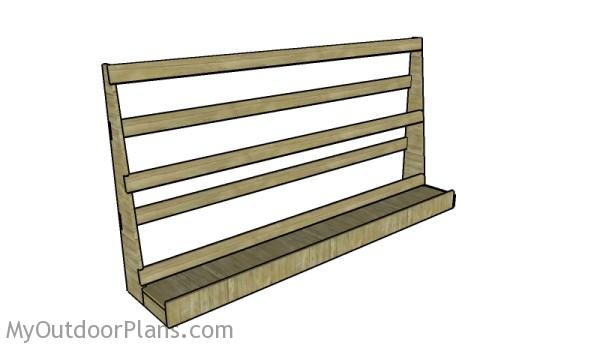
Panel Cart Plans
Fill the holes and dents with wood putty and let it dry out for several hours. Use 120-200 grit sandpaper to smooth the surface. Remember that you can adjust the design of the scrap panel cart to suit your needs.
Top Tip: If you want to enhance the look of the project and to protect the components from decay, we recommend you to apply paint or stain.
This woodworking project was about panel cart plans. If you want to see more outdoor plans, we recommend you to check out the rest of our step by step projects. LIKE us on Facebook and Google + to be the first that gets out latest projects and to hep us keep adding free woodworking plans for you.
